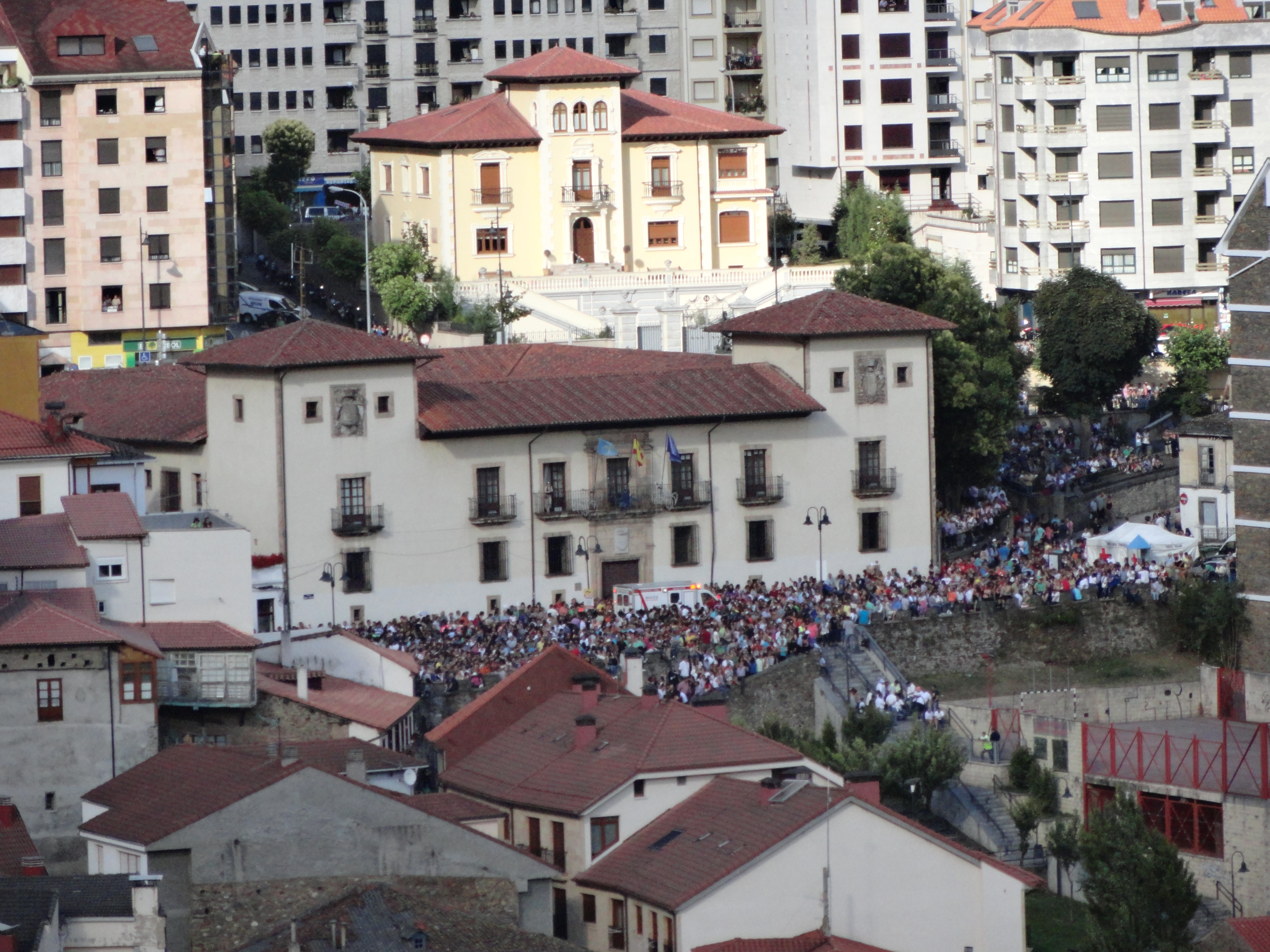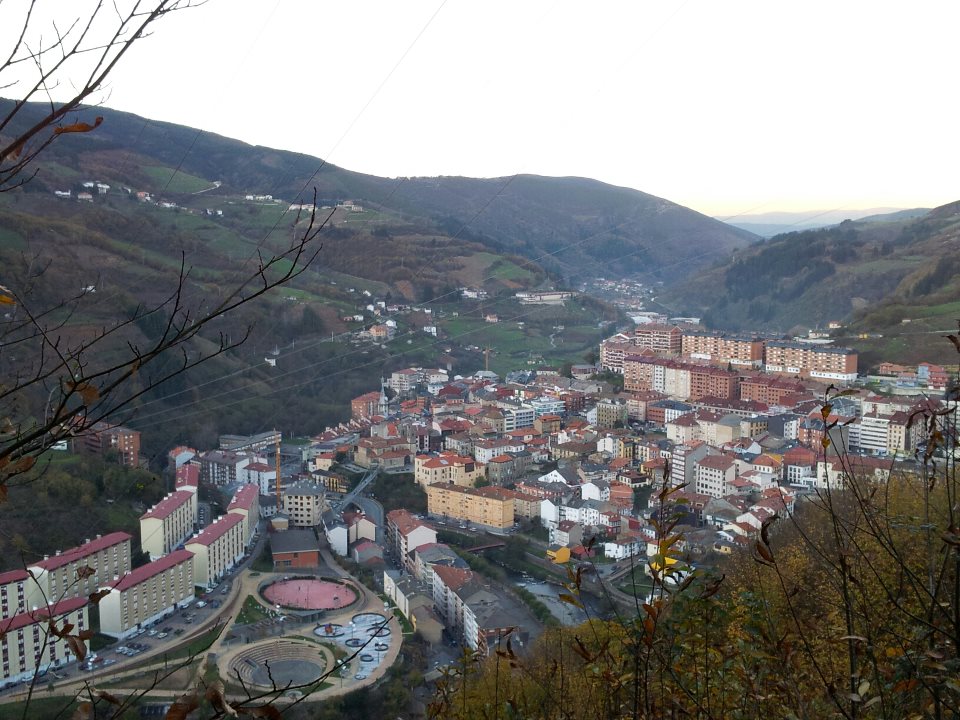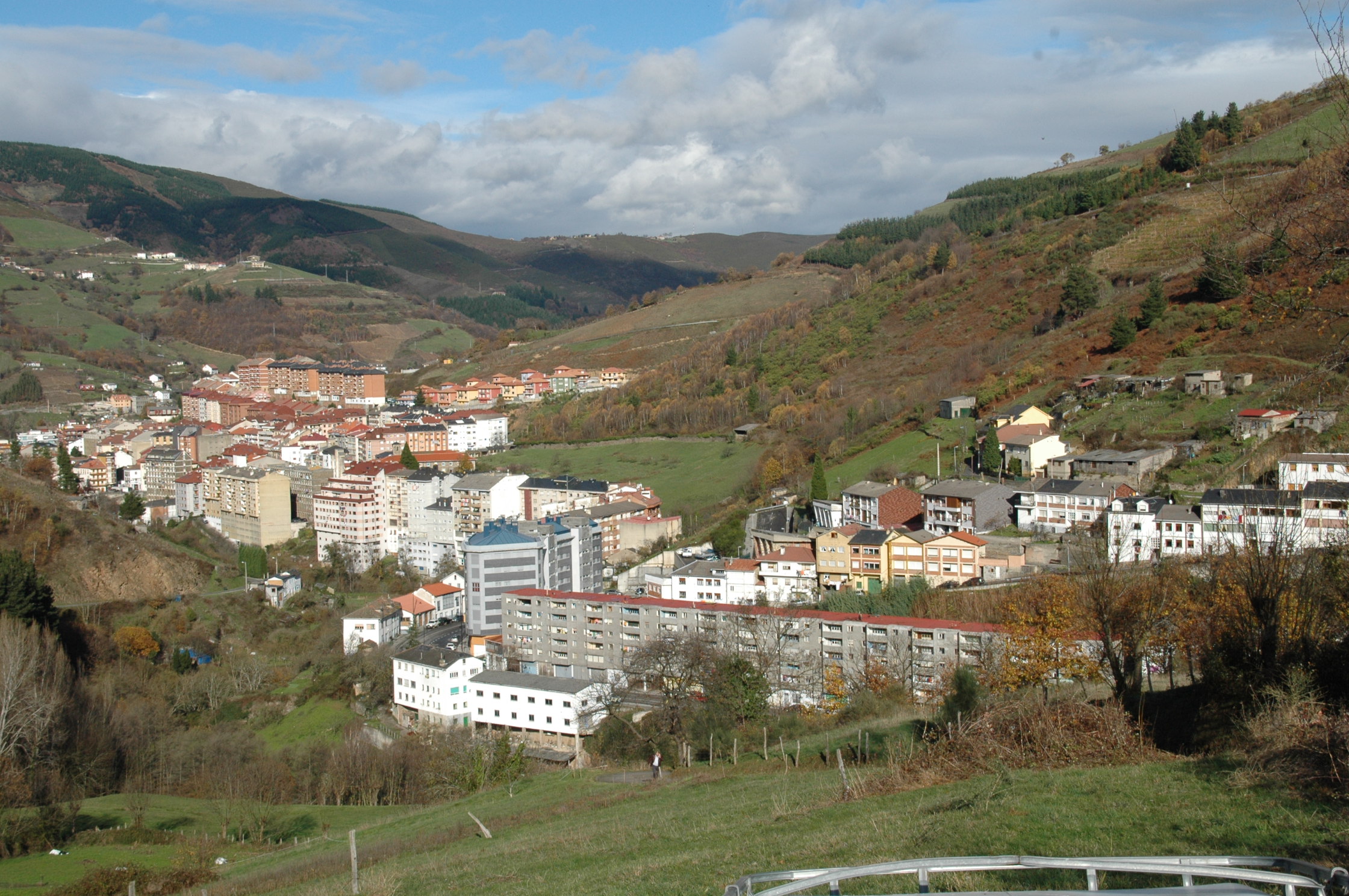Cangas del Narcea
Cangas del Narcea is a municipality in the autonomous community of Asturias, in northern Spain. Bounded on the north by Allande and Tineo, in the south of Degaña and Laciana in the province of León in the west of Ibias and to the east of Somiedo.
Geography
The town with 13,878 inhabitants ( 1 January 2013) is the capital of the municipality ( concejo ), which is also the oldest in Asturias among others. With an area of 823.57 km ² it is also the largest municipality in Asturias.
History
As in the whole Asturias confirm findings already colonization during the Stone Age, poet colonization but in the Iron Age finds in neighboring Ibias confirm here a lively artisan culture which also spacious traded and prove what pottery and coin finds. From the period of Romanization to the Middle Ages, many testimonies have survived, the church is not only the largest in Asturias, but also the oldest. Now, even the (monastery) Monasterio de San Juan Bautista was founded in 1032 Corias, which is currently being renovated and will be reopened in 2008 as the Parador. In 1255 the town of Cangas de Sierra is named as the administrative capital of the region under Alfonso X.. In the late Middle Ages, Alfonso XI. (called the Avengers ) received the monastery in Corias for his support extensive privileges. During the Napoleonic wars, many art treasures were confiscated and are probably lost forever. The destruction of the monastery rights led to the division of the area into smaller administrative communities Espina - Ponferrada, Cangas - Ouviñano, and Puente Nuevo. Only in the 20th century the place Cangas del Tineo was renamed in Cangas del Narcea and became the regional capital. In the 19th century there was a large wave of emigration overseas. Many Cangüeses tried their luck in the newly formed republics of South America, particularly in Argentina. In second place was the emigrants Destination Cuba, which belonged at that time, nor the Spanish Empire. In the first half of the 20th century, the massive emigration to Argentina and stopped only after the Civil War, the Cangüeses to Europe began to align. For political reasons, many fled to France. However, was particularly important in the sixties of the 20th century, the economic emigration to Switzerland.
Geology
Waters
The rivers Narcea, Degaña and Ibias rise here in the Natural Park of Fuentes del Narcea, Degaña y Ibias.
Climate
The climate is in accordance with the maritime coastal areas and moist with a pleasantly mild summers and also mild, rarely severe winters. Due to the Picos de Europa in the hinterland is expected in the spring and in autumn with fog.
Fauna
Large populations of (also rare ) birds of prey are a confirmation of the "healthy" nature. So you will find here include: hawks, sparrow, snake eagle, golden eagle, and some representatives of the owls and owls such as the tawny owl but also Egyptian vulture, griffon vulture and capercaillie can be found here. For nature lovers, the control rooms - almost like very Asturias - an El Dorado. Because the predators can only live where they can find enough food. This means that the fauna is also of singing birds and mammals that are enumerate here but not all.
Economy
First and foremost, the entire region is dominated by agriculture and mining. Especially the wine growing and animal husbandry have a long tradition, although of course the trade has grown here. The construction industry and the tourism industry are in a healthy growth, since the people have understood it to take advantage of their potential from the national park.
Demographics
Policy
The 17 seats of the council are elected every 4 years, and are subdivided as follows:
Attractions
- Monastery of Corias ( Monasterio de Corias )
- Basílica de Sta. María Magdalena.
- Palacio de Omaña - Palacio de los Condes de Toreno.
- Monastery of San Juan Bautista in Corias ( Monasterio de San Juan Bautista )
- Region with the National Park placed under UNESCO protection
- Palacio de Peñalba
- Capilla del Holy Christ of the Hospital
- Teatro Toreno
- Barrio de Entrambasaguas with the ponte " romana "
- Santuario del Acebo
Festivals and Celebrations
- Nuestra Señora del Carmen y la Magdalena, Cangas, from July 16 to 22
- La romería de Nuestra Señora del Acebo, in la sierra de los Acebos, on September 8,
- La romería de Santarbás, June 19
Parroquias
The municipality is divided into 54 parroquias:
- Adrales
- Agüera del Coto
- Ambres
- Bergame
- Berguño
- Besullo
- Bimeda
- Cangas del Narcea
- Carballo
- Carceda
- Castañedo
- Cibea
- Cibuyo
- Corias
- Coto
- Cueras
- Entreviñas
- Fuentes de Corbero
- Gedrez
- Genestoso
- Gillón
- Jarceley
- Larna
- Laron
- Leitariegos
- Limés
- Linares del Acebo
- Maganes
- Mieldes
- Monasterio de Hermo
- Montañas, Las
- Naviego
- Noceda de Rengos
- Oballo
- Obanca
- Onón
- Piñera
- Porley
- Posada de Rengos
- Regla de Perandones, La
- San Julián de Arbás
- San Martín de Sierra
- San Pedro de Arbás
- San Pedro de Coliema
- Santiago Sierra
- Tainas
- Tebongo
- Trones
- Vega de Rengos
- Vegalagar
- Villacibran
- Villaláez
- Villar Mental
- Villategil










